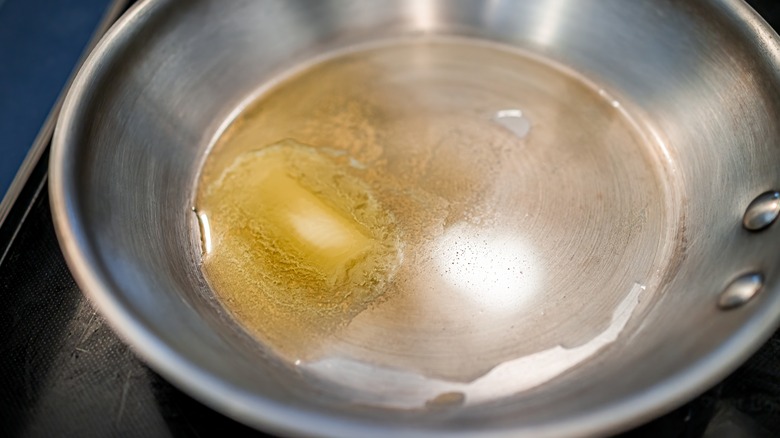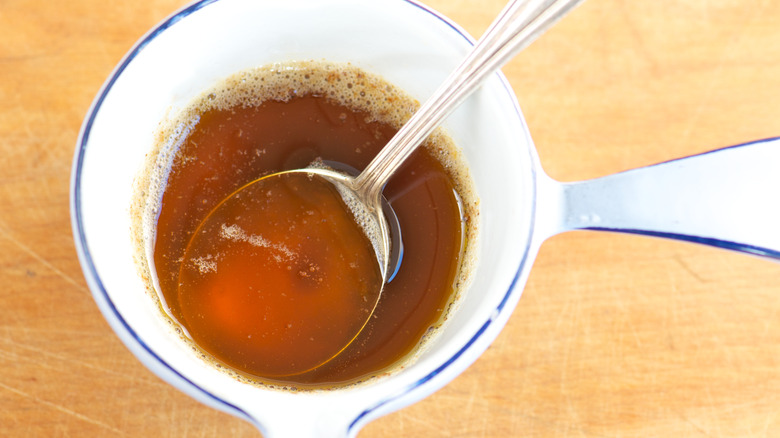Why You Should Always Use A Stainless Steel Pan To Brown Butter
Brown butter is one of life's everyday miracles: You take regular unsalted butter and heat it until it darkens and develops a new layer of aromatic, nutty goodness. Browning butter makes use of the Maillard Reaction to transform an everyday kitchen staple into something that's got a little bit of heaven mixed in (per Jessica Gavin). Brown butter can be used in a host of different ways, from desserts like browned butter chocolate chip cookies to savory creations, like a homemade brown butter sage sauce that pairs perfectly with fresh ravioli or steamed green beans.
One of the things that makes browning butter so satisfying is that it's also very easy: All you have to do so is heat, stir, and wait. But like so many easy things, it's also easy to get wrong — as anyone who has tried it can tell you. The biggest problem? Getting the butter to the perfect level of brown without burning it. It's not hard to inadvertently whip up a batch of burnt butter instead (via MasterClass).
There are ways to avoid this tragic fate. Cooking the butter over low heat helps, as does consistently stirring the butter and quickly transferring it to another container once it's done.
But perhaps the most important step is the first one: the kind of pan you use.
It's all about the visuals
Observation is a key part of making brown butter: There are too many variables involved for recipes to give a precise number of minutes that it will take for butter to consistently brown. So, it's important to watch the butter closely, and it helps if you're able to see its color. While you certainly can use a non-stick skillet, it's not a great choice, since My Food Memoirs points out that the butter can be hard to see against the non-stick coating, which can make it very difficult to tell what color it actually is.
If, however, you use a pan made from a lighter-colored material, it's easy to notice the changes in the butter's color. It'll start out light yellow and go from gold and then, of course, to brown when it's reached the final stage. Instead of nonstick, stainless steel does the job perfectly since it conducts heat evenly and provides a light backdrop for the nutty, buttery goodness that's happening on center stage. Once the butter has reached nutty, toasted perfection, you can then pour it out of the pan and into another (heat-proof) container to keep it from continuing to cook, according to Jessica Gavin.
After that, the only trouble will be choosing what recipe to use it for.

